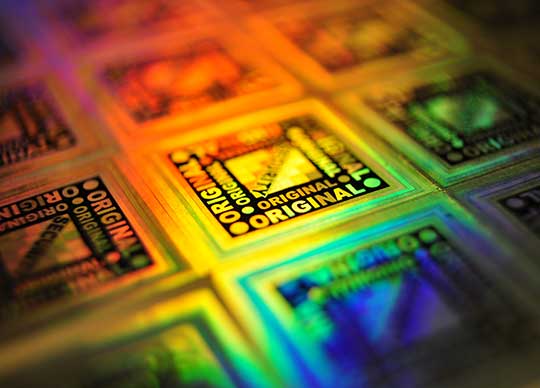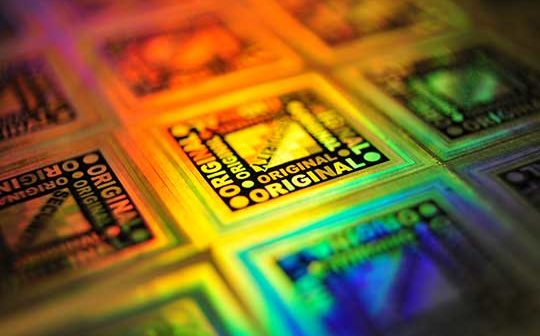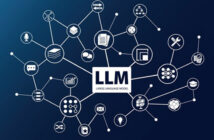
COVID threats and increased illicit trade and counterfeiting are among the factors set to drive hologram growth in 2022, particularly for authentication purposes.
The International Hologram Manufacturers Association (IHMA) says authentication and track and trace systems, which feature holograms, will help to underpin international efforts by government and law enforcement agencies to bolster overt and covert protection strategies in the next 12 months.
Fake COVID cards, documents and vaccines will remain a big security threat in the months ahead, so government, law enforcement authorities and global supply chains must review their anti-counterfeiting plans and investment in security resources.
Growth in security devices appears ‘strong and potentially lucrative’, says the IHMA, following The Future of Anti-Counterfeiting, Brand Protection and Security Packaging to 2026 and other reports predicting increasing incidences of global counterfeiting alongside heightened awareness of tracing technologies.
These indicate that brand protection, track and trace and other anti-counterfeiting technologies in packaging will increase in use as economies wrestle with the impacts of COVID. The packaging industry will continue to benefit in the coming months from the use of anti-counterfeiting solutions, particularly as fears over shortages of medicines, pharmaceuticals and vaccines in many parts of the world drive demand for counterfeit and illicit products.
Security devices such as holograms on packaged goods can ensure quality and check the distribution and smuggling of illicit products while items not displaying them can be seized and destroyed.
There is a growing volume of fake medicines on sale in developing countries, according to the World Health Organisation (WHO), while Interpol has reported an increase in fake medical products. Seizures of fake COVID tests and personal protective equipment (PPE) have also been reported by the US CBP and the World Customs Organisation.
Added to this, the economic damage wrought by COVID – including tax hikes, global shortages of raw materials and finished goods, rising prices and falling incomes – is providing fertile ground for illicit trade to flourish.
This situation is set to continue in the next 12 months, the IHMA predicts, while growth in authentication devices will stay ‘strong and lucrative’ on the back of forecasts that the market for anti-counterfeit technologies on pharmaceuticals and cosmetics products will grow. The overall global market for anti-counterfeit products on security packaging is projected to be worth in excess of US$ 188 bn by 2025.
A poll has revealed that almost 50% of hologram manufacturers and suppliers are seeing an increase in demand from customers, specifiers and end-users for holographic devices and technologies. This indicates that hologram users will continue to be concerned about the impact of counterfeiting on supply chains as the pandemic continues to be felt well into new year
IHMA chair, Dr Paul Dunn, said: “Counterfeiting puts governments, companies and the public at risk and must be tackled effectively to minimise the impact on society. We look forward to seeing supply chains further bolstered in 2022 with countries enhancing their anti-counterfeiting plans, which should include the introduction of harder hitting anti-counterfeiting legislation and strategies.
“It’s clear that in the face of the continued impact of COVID and other threats, we can legitimately say law enforcement, government, brand owners and other influencers will continue to push demand for authentication and brand protection devices such as holograms.”
Holography will also hold up well in comparison with other optical variable features in the currency market in 2022, says the IHMA. Despite predictions about the demise of cash, demand for banknotes has actually increased around the world during the pandemic – especially for high value notes as a store of value, which fuel demand in turn for holograms.
One third of all banknotes currently feature a holographic device, and the R&D going into ever more secure and complex holographic features for both paper and polymer banknotes that reassure the public and central banks about cash authenticity will continue.
On the other hand, a drop in travel has seen a decline in the demand for passport and travel documents, and hence for holographic devices that protect these. So long as uncertainties remain around COVID, this situation will persist, but is somewhat offset by the global migrant crisis, which will continue to drive the development and deployment of secure personal identification outside of that related specially to COVID.
Dr Paul Dunn said: “Innovative features in banknotes are pushing the boundaries of what the technology can achieve, reflecting that there is plenty of mileage in holography. We will also see new applications for holographic features on ID documents coming through, where innovations linked to digital applications, packaging and tax stamps, could all see continued growth.”
The exploration of holography technologies for new wearable head-up displays and other smart devices to enhance people’s lives along with applications will see continued development in the new year. Holographic optical elements (HOEs) which are used in, for example, vehicle lighting and head-up displays, will also continue to gain traction alongside ‘ground-breaking’ holographic applications in medical imaging, solar energy, data storage, healthcare such as legalised cannabis-derived treatments, and cryptocurrencies, says the IHMA.
The use of authentication solutions, as advocated by the ISO12931 standard, enables examiners to verify the authenticity of a legitimate product, differentiating it from fake products coming from counterfeiting hot spots in Asia and eastern Europe. Even those that carry a ‘fake’ authentication feature can be distinguished from the genuine item if that item carries a carefully thought-out authentication solution.






